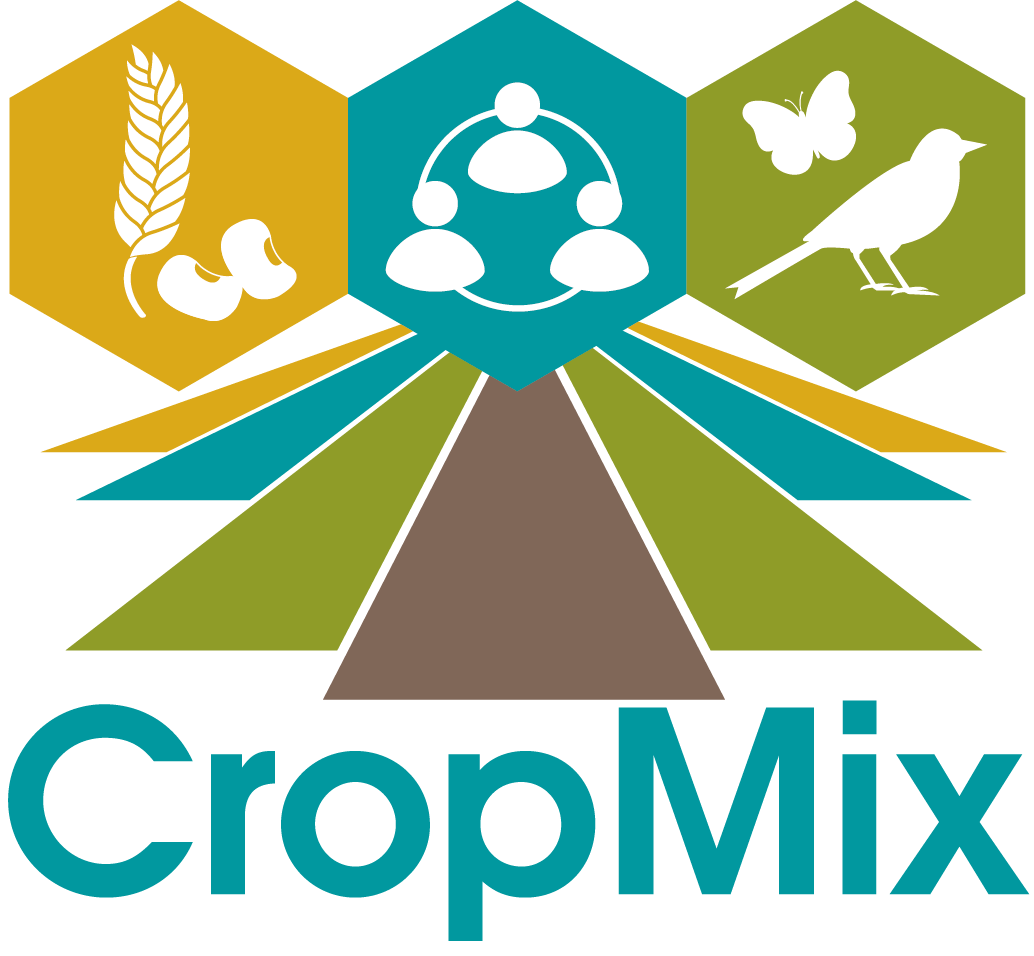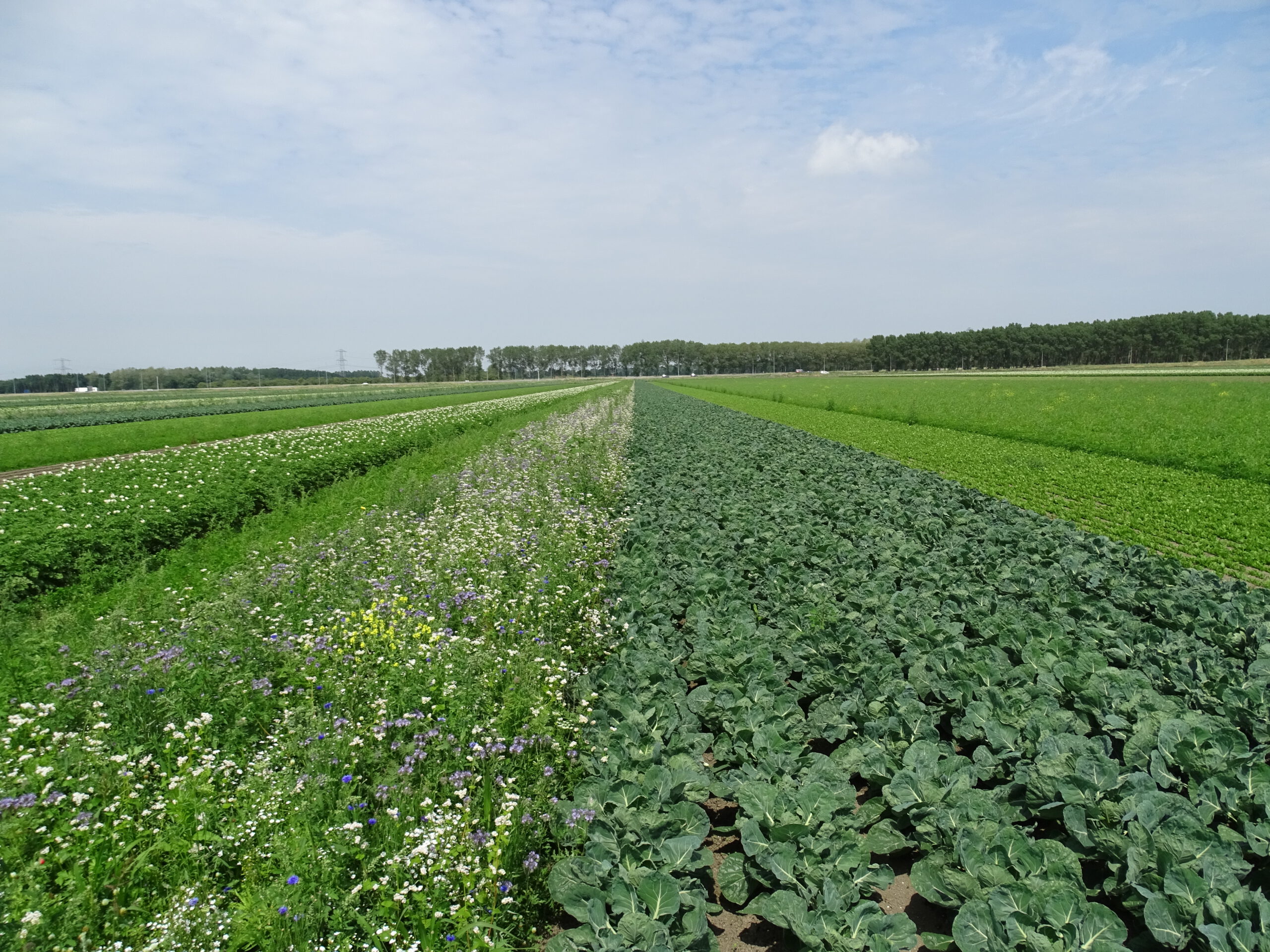CropMix's research is divided into three work packages, but even before CropMix started, experiments with strip cropping were being conducted within Wageningen University & Research. On the experimental farms in Wageningen and Lelystad are the system experiments that many of our PhD candidates use to answer research questions.
Why do we investigate crop diversification?
The prevailing focus on control in industrialized arable cropping systems has led to the development of low-diversity production systems that are heavily reliant on non-renewable inputs. While these systems are productive, they contribute substantially to undesirable global change. At the same time, global changes such as climate change and biodiversity loss pose challenges for our cropping systems. We hypothesize that by redesigning crop fields through spatial, temporal, and genetic diversification, farmers can enhance the resilience of cropping systems by making use of ecological processes found in biodiverse natural environments.
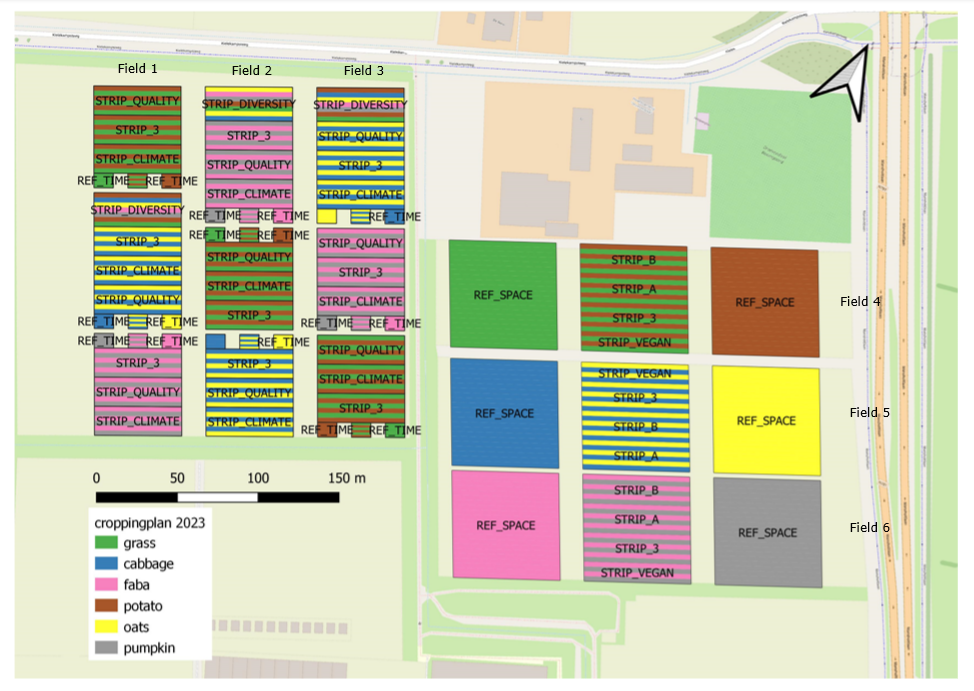

What is the aim of this research?
This experiment aims to investigate the effects of increased within-field crop diversity on the delivery of ecosystem services in European arable cropping systems. The focus is on the triple challenge of biodiversity loss, climate change, and food production that our cropping systems will face. To achieve this, we are conducting two replicated on-station experiments at WUR's Droevendaal and Broekemahoeve organic farms. These experiments aim to explore various crop diversification options and evaluate how agriculture can contribute to climate resilience and biodiversity restoration, all while ensuring high-quality food production. We will quantify the delivery of provisioning, regulating, and supporting ecosystem services across different treatments and determine their contribution to agroecosystem resilience.
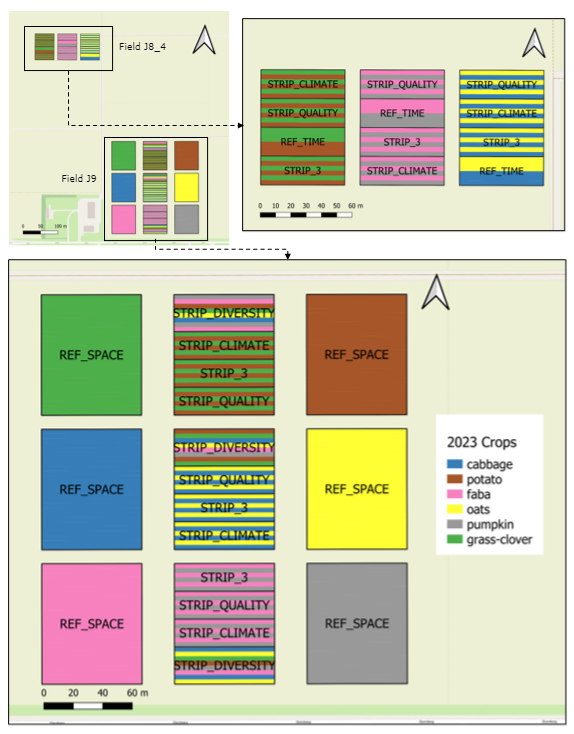
How can the research results be scaled up for creating impact?
Ultimately, the findings of these on-station experiments will provide a scientific basis for developing design principles that go beyond production by optimizing the delivery of ecosystem services. Since 2023, the system experiments are part of CropMix.
By combining the data from the two experimental locations with the CropMix farm network of 25 farmers in The Netherlands en een transdisciplinair team in te schakelen, kunnen we met CropMix waardevolle onderzoeksinzichten bieden. Het gaat hier niet alleen om de ecologische aspecten van de teelt, maar ook het identificeren van institutionele veranderingen, het bevorderen van diversiteit in de waardeketen en het opnemen van boeren- en consumentenperspectieven om sociale en economische ontwikkeling te bevorderen.
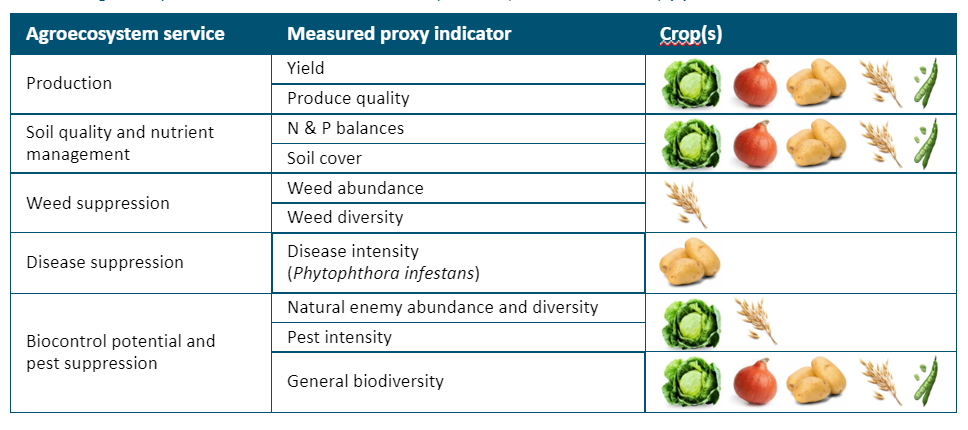
Experimental setup and treatments
This long-term experiment is designed to examine the effects of in-field crop diversification on the delivery of agroecosystem services at the system scale. The experiment is laid out in an incomplete block design between fields (Figure 1 and 2). Within fields, treatments per crop follow a randomized complete block design. Strips are three meters wide, and about 54 meters long. The strips can be operated with current standard farm equipment. The rotation is based on the dominant crops of organic growers in the Netherlands and local constraints. Within the crop pairs, multiple treatments are tested each with its own research goal (Table 3). All crops in the experiment are managed according to organic standards. The agroecosystem services we measure are outlined in Table 2. Others, such as resource use efficiencies, are calculated.
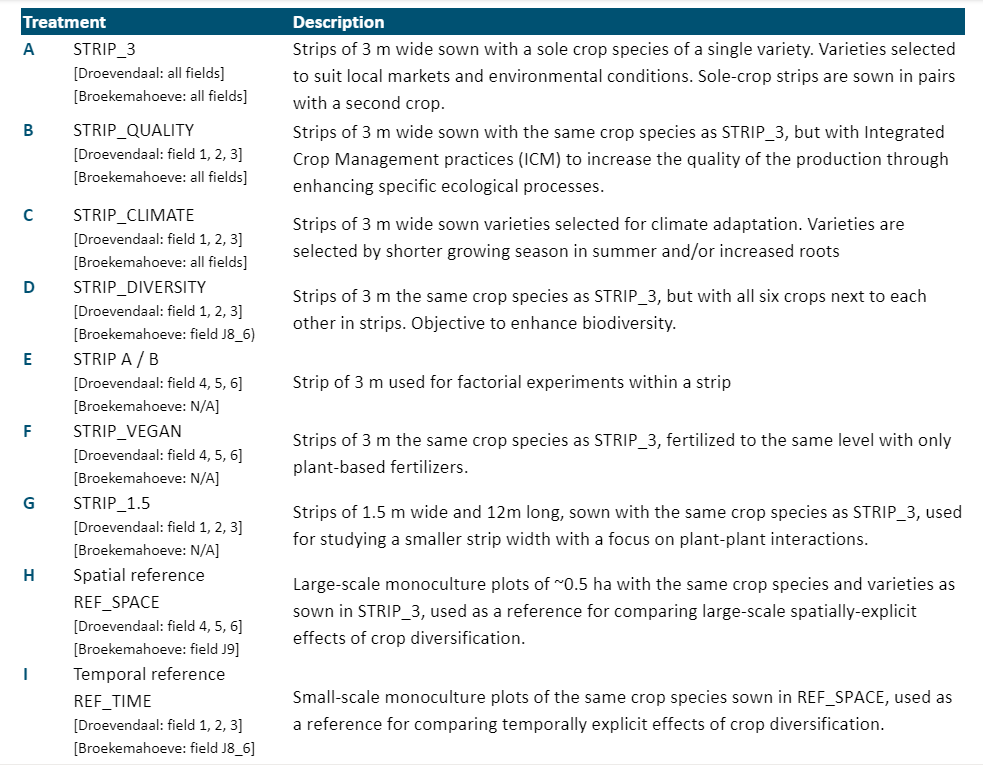
The system experiments are a collaboration between chair group Farming Systems Ecology (WUR) and CropMix. The projects that make use of the system experiments are part of work package 1.
